With the best turbo trainers being so sophisticated – and even fun when connected to a virtual cycling app – increasing numbers of triathletes are turning their backs on the great outdoors in favour of their home training set-up.
Gone are the days when you’d simply lock your bike into a ‘dead’ turbo trainer and use a dial to create resistance. The more sophisticated turbo trainers in come with power meters, Bluetooth connection and plenty of built-in virtual resistance, so you can push yourself to the limit without having to halt because of the cold.
- Indoor virtual cycling training platforms: pros and cons
- Indoor virtual cycling training platforms: 6 of the best
With the prices of most of the turbo trainers on test higher than many entry-level bikes, they’re a serious investment, but certainly a worthwhile one if you’re going to use it year-round.
To test the trainers, we used the same bike and did numerous sessions on each, connecting them to the Zwift training app. We used power meter pedals to accurately check consistency in power readings, and took value, specification, ride feel and quietness into consideration to reach our verdicts.
Best turbo trainers for triathletes
Saris M2
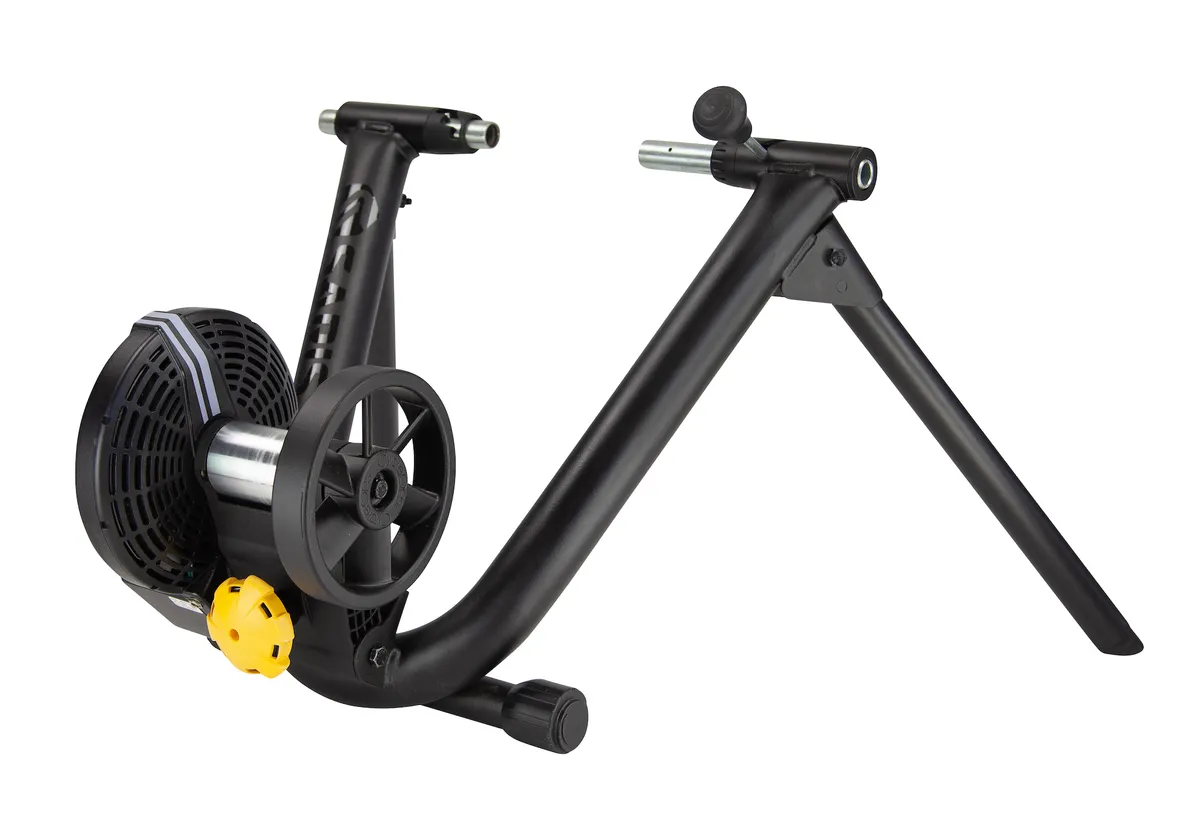
- £499.99
At £499.99, the Saris M2 is certainly at the more expensive end when it comes to wheel-on trainers, but if you don't want the faff of disassembling your bike and like classic trainers, it's a more affordable way to enjoy smart training.
Bluetooth and ANT connectivity allows you to connect to apps, while it also allows you to measure both power and cadence. During testing, it felt solid and sturdy, with a very limited amount of slippage present when taking on harder efforts.
With a weight of 10kg and foldable legs, you shouldn't have too much trouble moving it around, which is ideal if you don't want it out all of the time.
Verdict: It's not cheap, but it's a good option if you want a wheel-on trainer
Score: 79%
Read our full review of the Saris M2.
Elite Direto XR-T
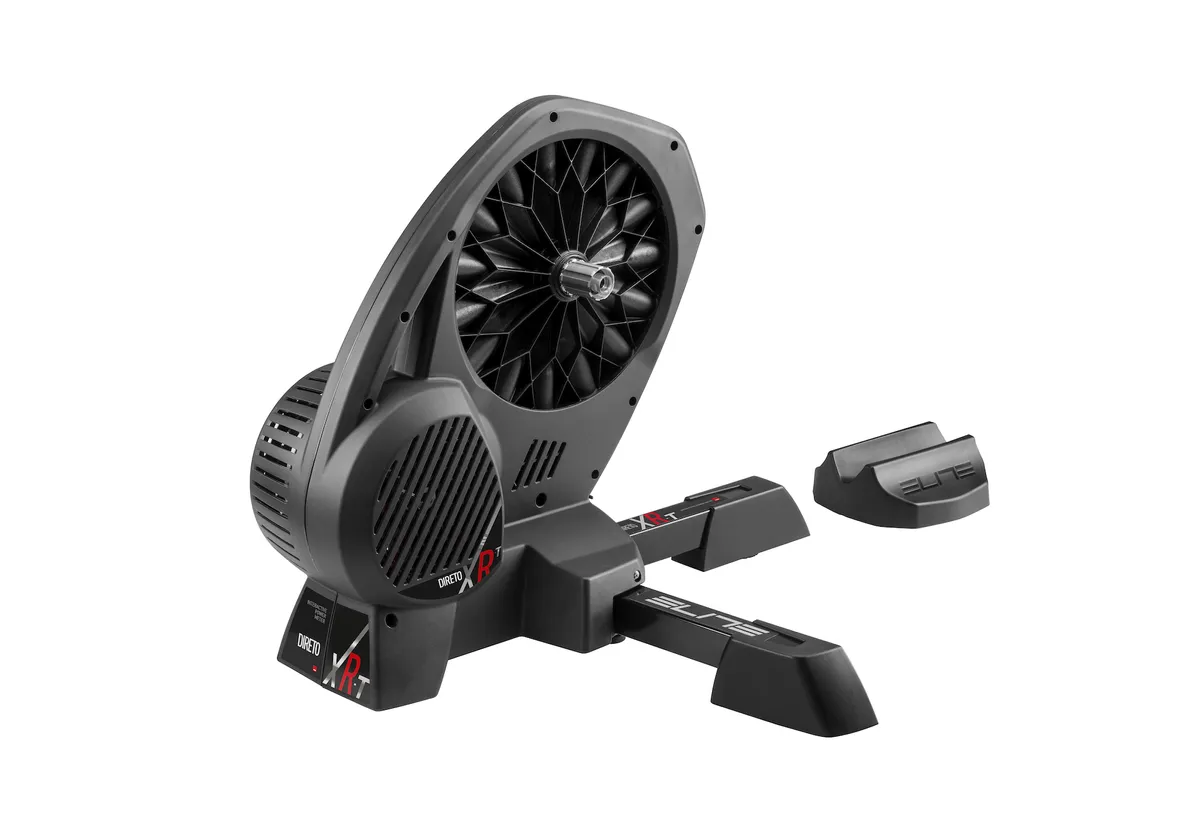
- £829.99
This is Elite’s top-of-the-range trainer. Unlike the XR version, which comes with an 11-speed, Shimano 105 cassette, the Direto XR-T doesn't. Apart from this they’re essentially the same product.
In the box you'll find the trainer, a riser block and adapters for disc brakes, but what you don't see is that with your purchase you'll also get a one-year membership to Elite's My E-Training software and a one-month subscription from Zwift.
It's not difficult to move around, is study and has a ride feel that is unrivalled. The power adjusts quickly and smoothly, while a max resistance of 2,300w means even the best age-groupers won't trouble this machine.
Verdict: Hard to fault; a turbo that's well worth the lofty price
Score: 92%
Read our full review of the Elite Direto XR-T here.
Tacx Flux S
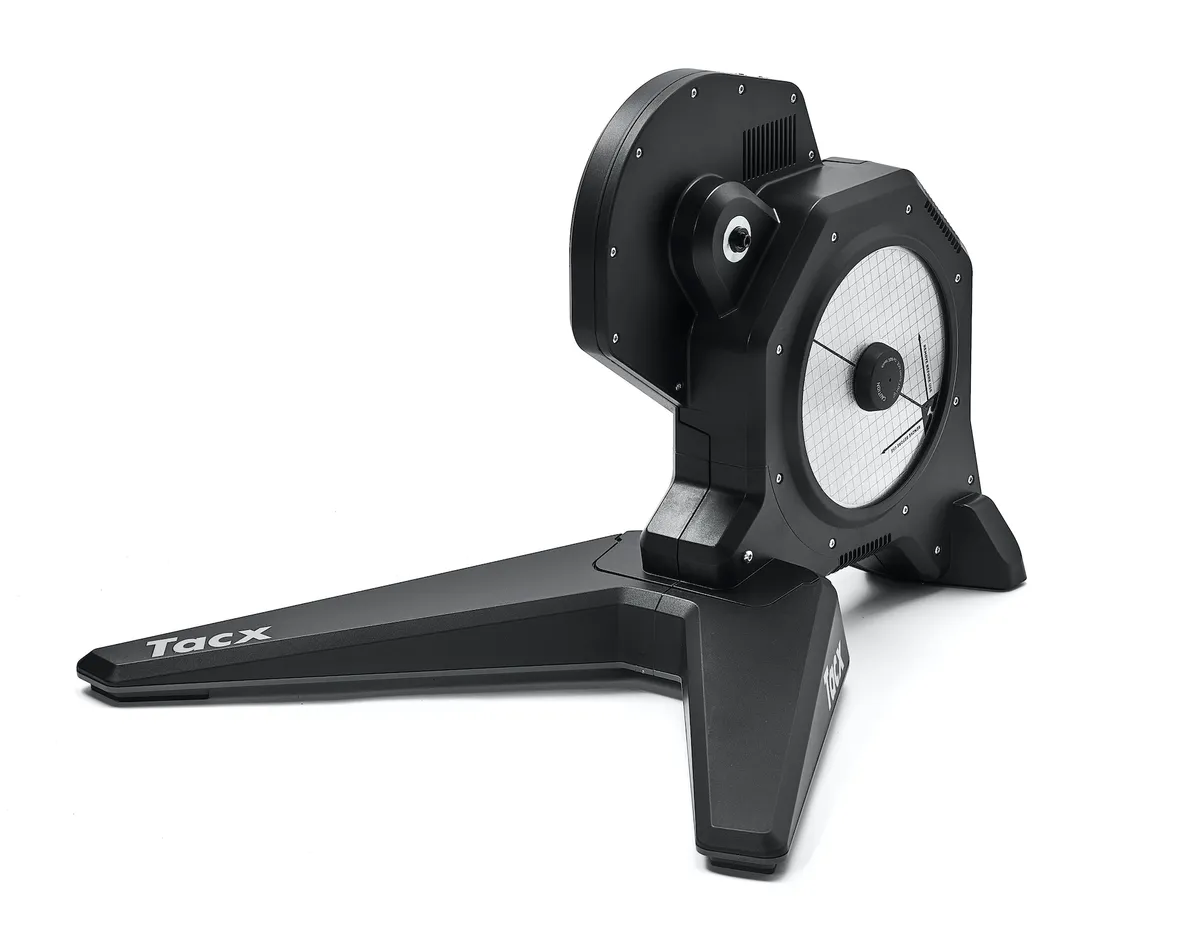
- £549.99
The Tacx Flux S brings direct drive down to a much more palatable price point. But that does mean compromises, including /-3% power accuracy and no thru-axle compatibility out the box.
Set-up is simple, requiring you to put the legs on, add a cassette and bike, then plug in. It’s impressively quiet and has a pretty good ride feel; in fact, we’d struggle to tell it apart from more expensive direct drive units when pedalling steadily.
While consistent, the power underread slightly more than 3% compared to our power pedals, but cadence was better with less than 2rpm discrepancy. The Flux S took a few seconds to adjust during intervals and, at over 22kg with fixed legs, isn’t a trainer to be moved regularly.
Verdict: Slow off the mark, but great value for direct drive
Score: 84%
Elite Suito-T
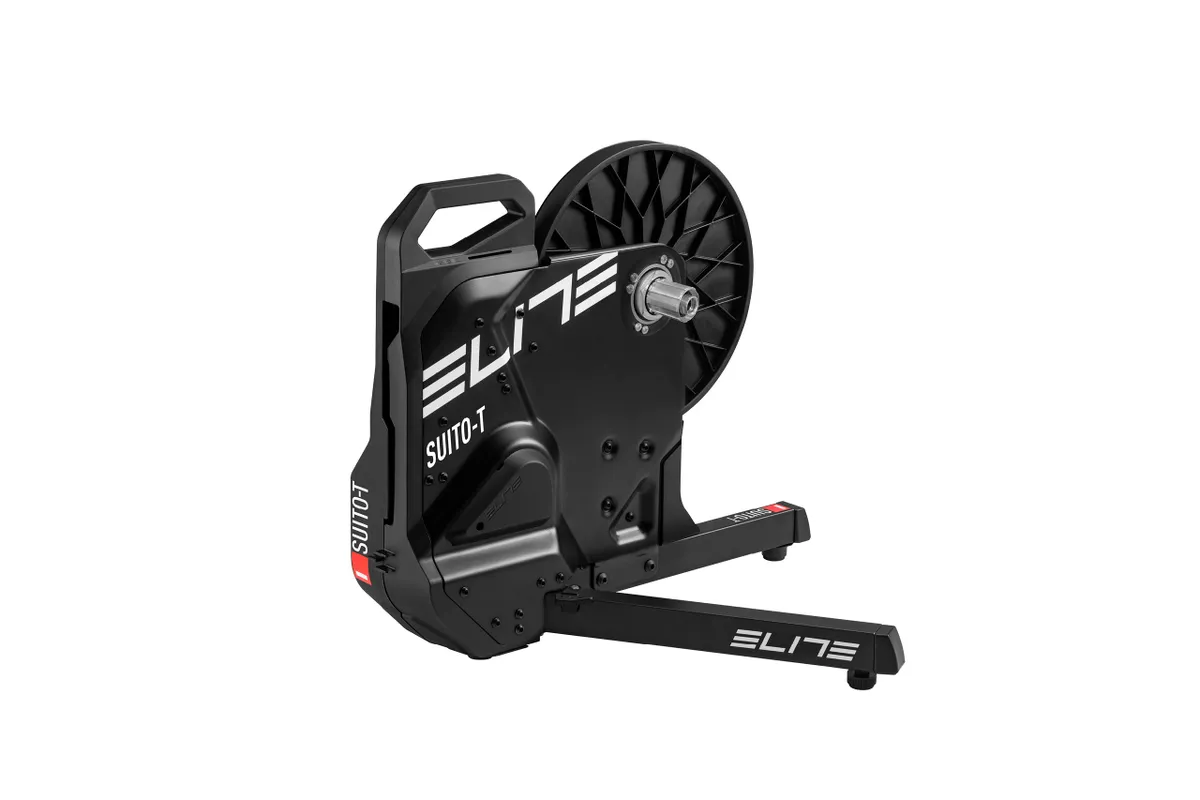
- £639.99
Weighing 14.5kg, the Suito-T has legs already attached and a convenient carry handle. Once you’ve folded the legs out and loaded your bike on, it’s a case of connecting to Elite’s app, calibrating, before connecting to your favourite training app.
The Suito-T comes with free trials of popular apps such as Zwift, a nice touch to get you started. The Elite simulates gradients up to 15% and the max power it can handle is 1,900 watts – impressive figures for a mid-priced smart trainer.
We found the Suito-T was a little louder than the JetBlack Volt reviewed below, peaking at 65 decibels while riding at 200 watts, but it shouldn’t trouble the neighbours. It’s relatively sturdy but wobbles a little when you’re out of the saddle.
The power is delivered smoothly, although during big efforts in ERG mode it takes a little longer to ramp up than we’d like.
Power accuracy was not quite within its claimed /-2.5% compared to our trusty Favero Assioma pedals, particularly at higher wattages. We found accuracy improved by moving to the small chainring.
If you value a conveniently designed trainer and a decent indoor riding experience without a very big-ticket price, the Suito-T is well worth your consideration.
Verdict: A fine trainer, if not the most accurate on the market.
Score: 85%
JetBlack Volt
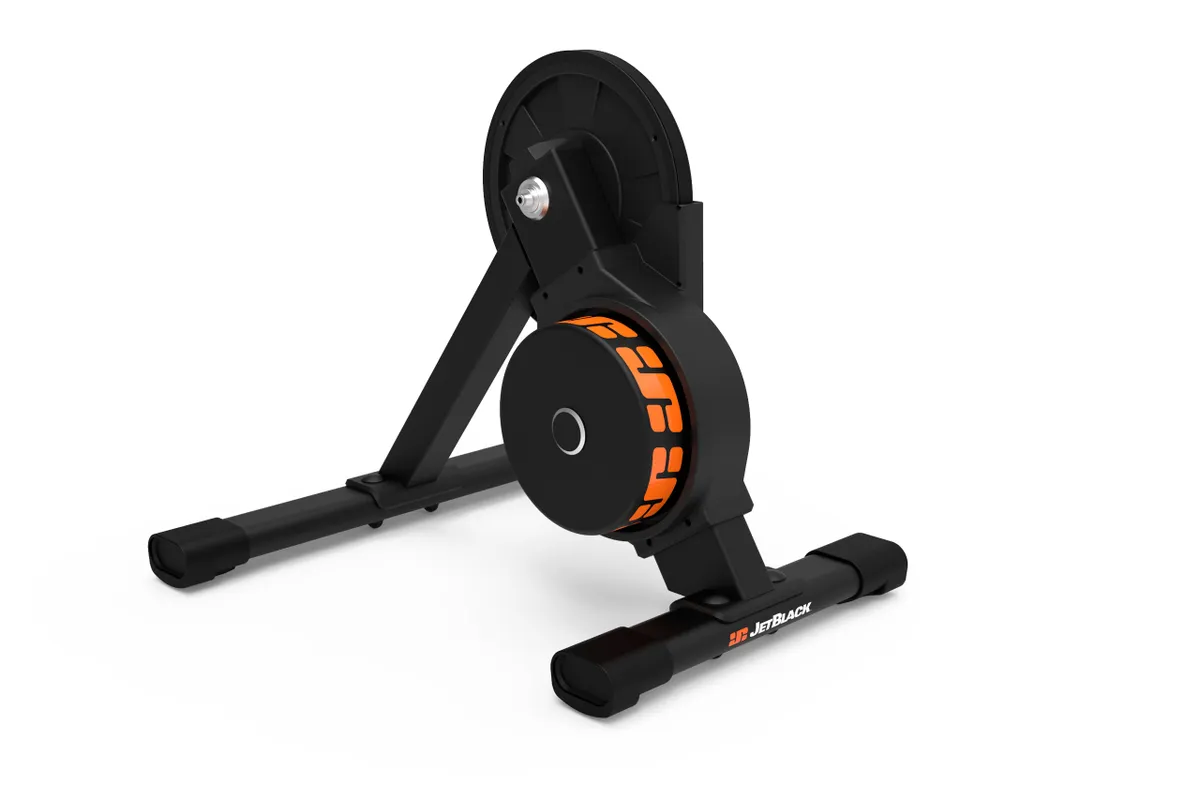
- £699
The Volt has an 11-speed Shimano/Sram cassette included to save most riders a job during set-up. That set-up is marginally more effort than the Suito-T reviewed above, but bolting the legs on is only a 5min job. The unit isn’t prohibitively heavy at 15.4kg, but there’s no carry handle, which is inconvenient, though calibration is simple enough.
The Volt includes everything and more than you’d expect at this price, such as Bluetooth and ANT connectivity, thru-axle adapters, 16% gradient simulation and 1,800 watts at maximum power.
When you’ve paired the power and built-in cadence sensor, the Volt also allows you to pair a heart rate monitor via the JetBlack app, which then displays on-screen in your app of choice. It’s a useful feature that’s currently unique to the Volt. It felt smooth, didn’t move a millimetre and reacted very sharply during interval sessions in ERG mode, going from 150 to 350 watts in less than two seconds, and without jolting.
Power accuracy is claimed to be /-2.5%, but compared to our Assioma pedals we actually found on average the Volt was inside that. It’s quiet, too, putting out just 61dB at 200 watts. The Volt is seriously impressive for the price and just edges a head-to-head with the Elite Suito-T.
Verdict: Super-sturdy and accurate trainer that packs a fiscal punch.
Score: 90%
Wahoo Kickr Snap
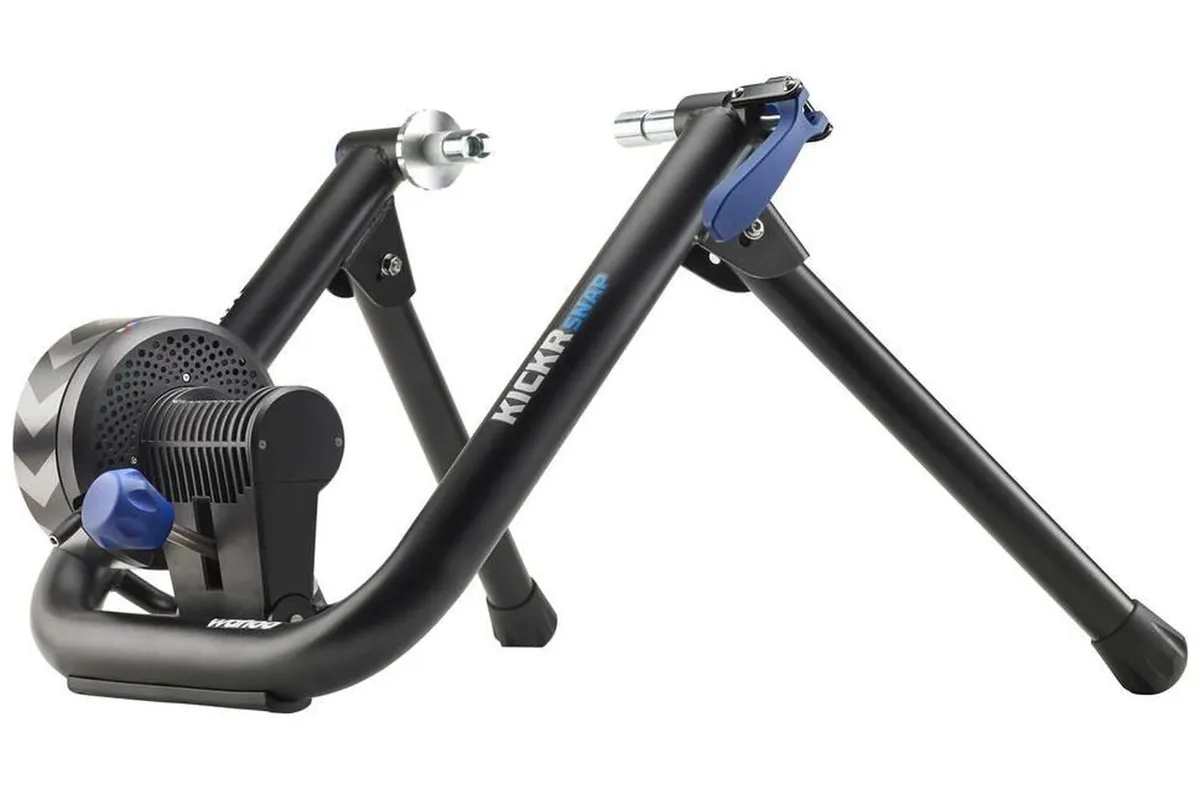
- £429.99
The Kickr Snap is Wahoo’s most affordable trainer, and its only wheel-on option. Power accuracy is improved to /-3% in the latest version, but you’ll need to purchase an additional sensor to get cadence.
A front wheel block is included, grade simulation is up to 12% and max resistance is 1,500 watts. Set-up is simple, but some guesswork is needed to correctly tension the adjustment knob against your tyre. A hefty 4.5kg flywheel creates impressive inertia, but during out-the-saddle efforts the Snap is a tad wobbly and we had a bit of tyre slippage.
Power accuracy was largely fine, requiring a spindown calibration with the correct tyre pressure to get it reading consistently compared to our power pedals.
Verdict: Not perfect, but a very capable and quiet trainer
Score: 75%
Elite Suito
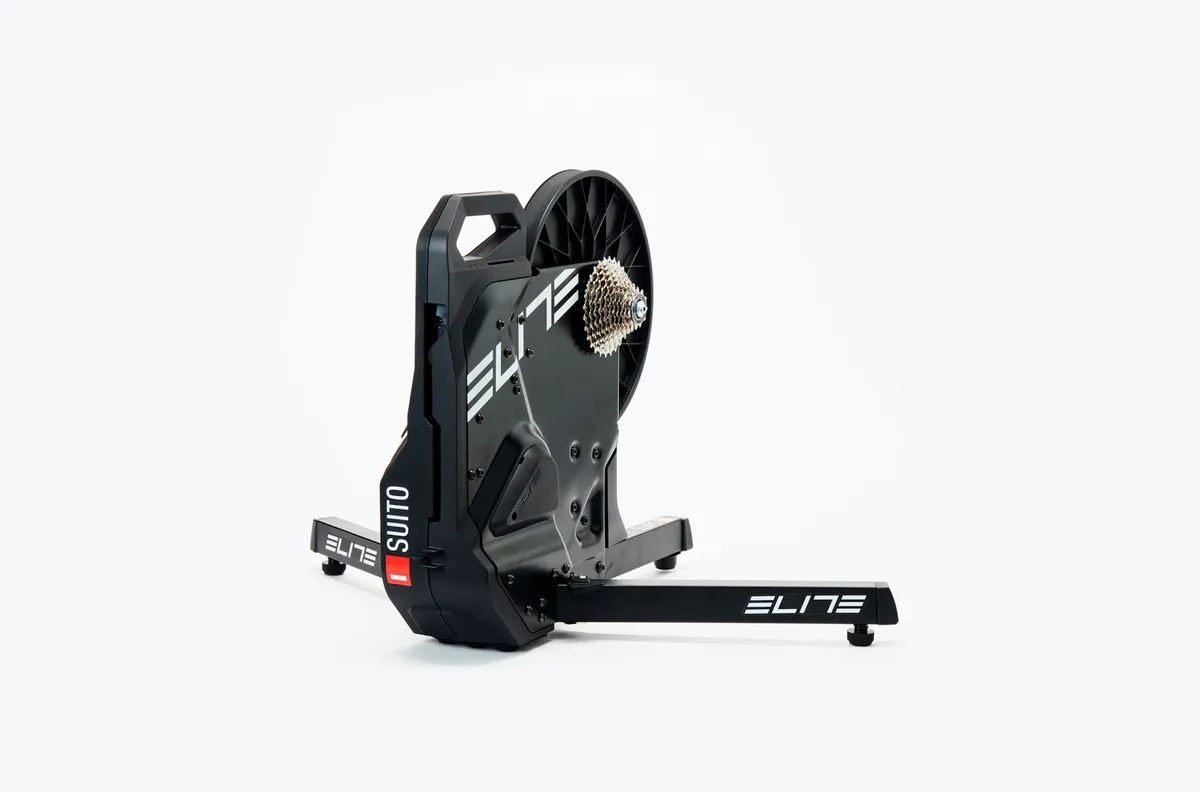
- £649
Weighing in at 14.5kg, the Suito is the lightest trainer on test and also has a useful carry handle. An 11-speed Shimano cassette out the box saves time and money, as do the quick release and thru-axle adapters, and the legs simply fold out, so it’s all ready to go.
A front wheel block is included, and there’s a cadence sensor, power measurements accurate to 2.5% and inclines up to 15%. It was a tad noisier than the others on test, according to our readings (peaking at 65 decibels), but it’s still impressively quiet.
It connects to our training app of choice instantly, and in ERG mode the resistance shifts smoothly. Although Elite reported firmware issues when the Suito first launched, we found the power readings to be largely accurate compared to our control pedals.
Verdict: All the features a triathlete needs, at a better price than the competition
Score: 90%
Wahoo Kickr Core
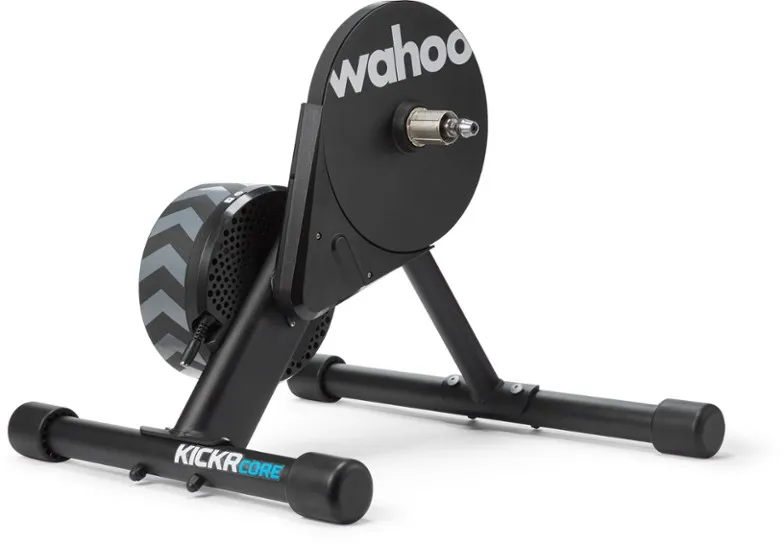
- £699
The Kickr Core essentially works the same as Wahoo’s flagship Kickr, with a smaller flywheel and a lighter feature list. For £300 less you miss out on a built-in cadence sensor and a cassette, while the max power it can withstand is 1,800 watts, as opposed to 2,200 on the Kickr.
You have to bolt the legs on yourself – a simple job that takes three minutes – and when you get started it connects to apps via Bluetooth quickly. It’s quiet, with the noise peaking at 62 decibels, and the power readings appear accurate with Wahoo claiming accuracy of /-2%.
The max incline is 16%, and you can also attach Wahoo’s Kickr Climb (available separately) to get the full virtual climbing experience. Sadly, moving it around is a pain, but if it’s for a dedicated pain cave this won’t be an issue.
Verdict: Awkward to move around, but a highly capable and quiet trainer
Score: 87%
Tacx Neo 2T
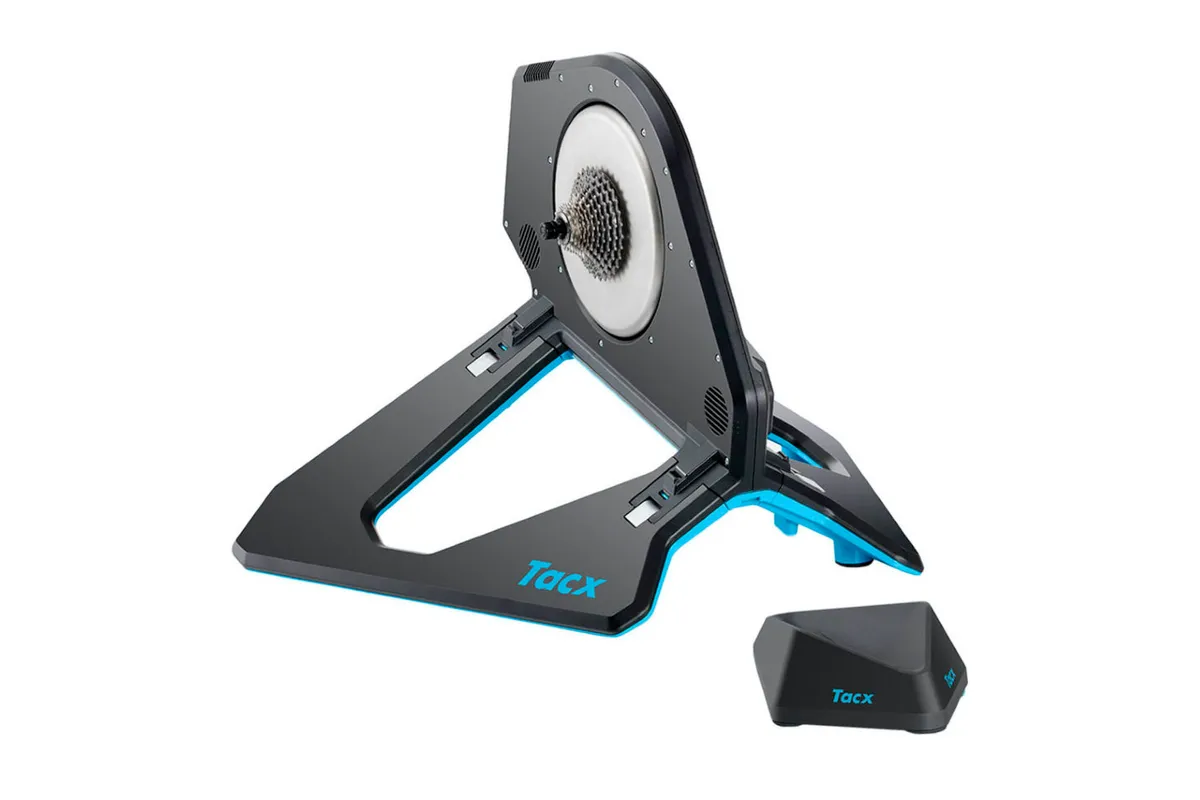
- £1,199
Tacx was playing catch-up before its original Neo trainer was updated, but the design has been nailed with the Neo 2T. Proclaiming it as ‘the most powerful, accurate and realistic trainer to date’, there’s even more motor power (with the option to run it wireless), greater stability and, finally, thru-axle compatibility out the box.
It looks like a spaceship with the unit lighting up underneath, and the huge wings make the Neo 2T absolutely solid, even though it’s very heavy at 21.5kg. Power accuracy is spot on, and we could really notice the superior quality of the ride feel.
It’s also super quiet, with the lowest reading of the four direct drive trainers in the test. It’s a huge investment but, if you’re after the most capable smart trainer on the market, it’s worth it. zyrofisher.co.uk
Verdict: Very pricey, but a truly deluxe trainer with all the bell and whistle
Score: 92%
Saris H3
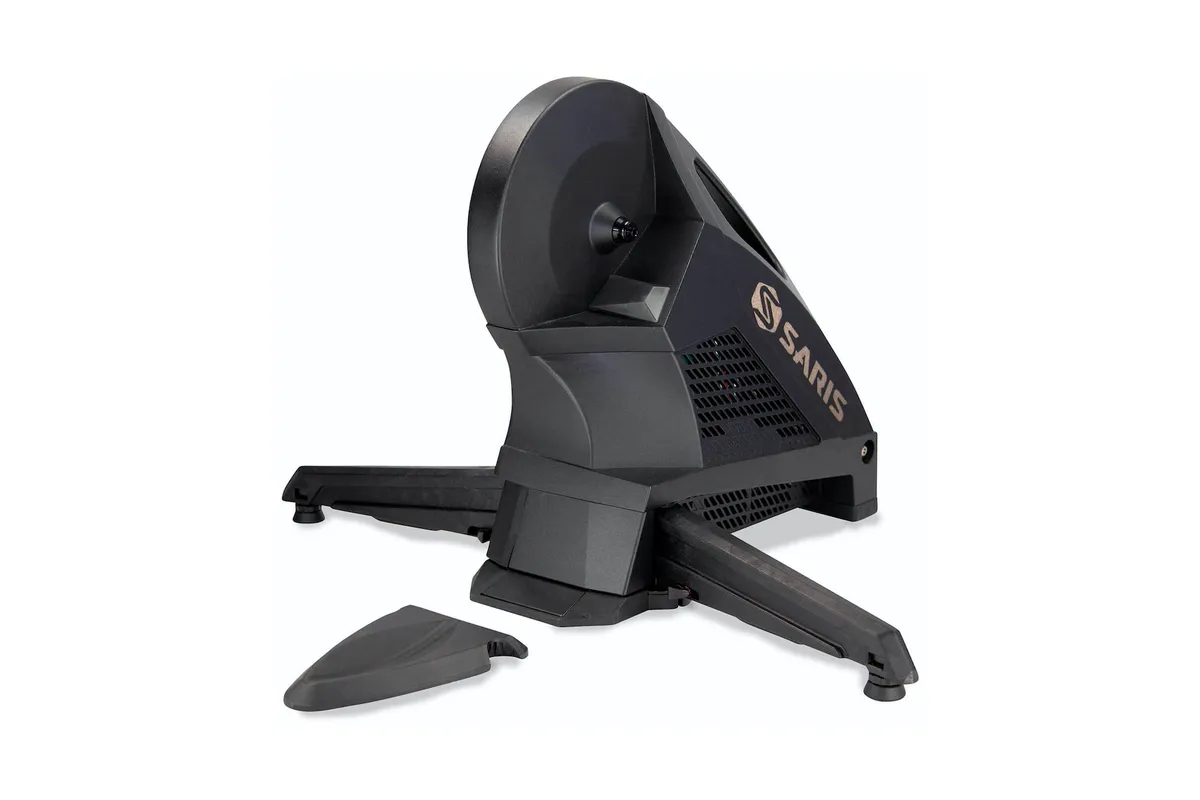
£849
Like the Tacx, the H3 doesn’t have a cassette included, which makes the price even steeper. Yet there’s everything else you’d expect from a top-end smart trainer, with claimed power accuracy of +/-2%, a 2,000 watt max power rating and a built-in cadence sensor.
The H3 instantly connected to our app of choice, with noise peaking at 59 decibels at 35km/h. The max climbing grade is 20%, second only to the Tacx at 25%, and Saris has added internal cooling tech to keep the data accurate.
The resistance felt responsive, and if you prefer riding without entertainment there’s also a ‘headless mode’ that simulates resistance without needing an app connection. It’s chunky at 21.3kg, but there’s a carry handle to help you move it, while you get all the adapters you could need.
Verdict: Feature-packed and accurate, but with a big price tag and overall weight
Score: 86%
